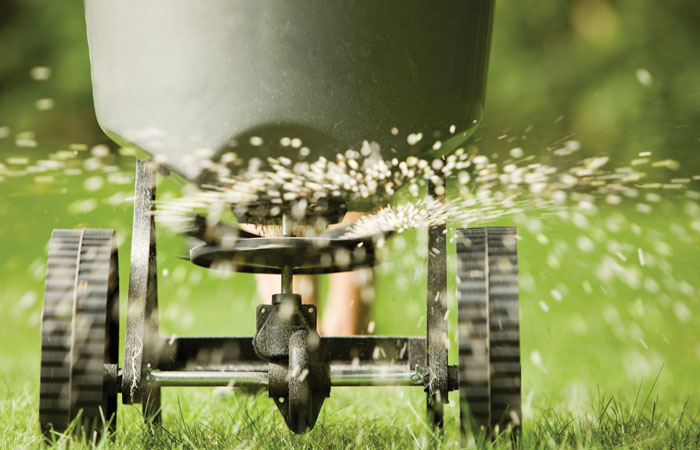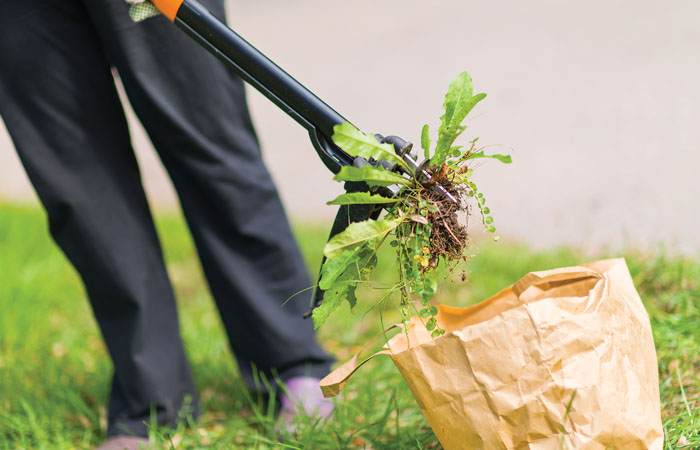August is famous for being hot, Texas hot, and this year has given us many 100-plus degree days already. Even the Old Farmer’s Almanac recognizes the legendary dog days of summer to be deep in the heart of August. So it’s no surprise that the question I hear a lot around the club these days is what are the top safety tips for working or playing outdoors in the heat? I have logged over 50 years working outdoors in the agriculture and golf industries and have seen the impacts of good and bad choices when it comes to safely working or playing outdoors in the heat, especially in August.
There are three major safety tips for working outdoors in the heat, and they are sunscreen is necessary, stay hydrated and wear the right clothes. These simple things can be the difference between a productive and fun outdoor experience and a life-threatening heat-related illness.
Let’s take a deeper look at the basics of safely working and playing outdoors in the heat.
Sunscreen is Necessary
Summer golf can be awesome! The turf conditions are good (especially warm-season grasses such as Bermuda and Zoysia), the days are long, and many golfers are trying to play 36 or more holes a day. There are also more maintenance tasks to do, as well, both on the course and at home, so we all end up being active, outside and exposed to higher temperatures for longer duration.
There are risks from heat or sun exposure. Let’s start with the most obvious, sun exposure. I have been a golfer and professional greenskeeper for 37 years and always keep my annual dermatologist appointment, because the greater your exposure to the sun, the greater the risk of skin cancer. We are playing a long-term game with serious consequences. That doesn’t mean we are doomed to stay indoors away from the sun, but it does mean we need to take some positive actions to play the game we love or keep up the maintenance of our green spaces.

Simply put, sunscreen is necessary and should be applied properly. No matter the forecast, sunscreen is the one step you should never skip before heading outdoors for the day, especially in August. Note that not all sunscreens are the same. Sun Protection Factor, or SPF, is the most common rating for sunscreens, and they generally range from 30 to 100 SPF. SPF 30 blocks nearly 97 percent of UVB radiation, SPF 50 blocks about 98 percent, and SPF 100 blocks about 99 percent, respectively. Remember to apply and reapply sunscreens as needed and be aware that sunscreens can expire, so check the date on the sunscreen that has been in your golf bag or garden shed for a while. Also note that these expiration dates are only accurate if the product was stored in a cool dry place (car trunks or back seats are generally hot).
Another good sunscreen tip is to look for broad spectrum protection on the label. This ensures your SPF protects against both harmful UVA and UVB rays (UVA rays prematurely age skin and UVB rays burn; both can cause skin cancer). Experts recommend choosing SPF 50 or higher. Ask your dermatologist when you have your next checkup what they would recommend. When it comes to sunscreen, an ounce of prevention is worth a pound of cure.
Wear the Right Clothes
For our purposes today we are going to focus on the function of summer clothes, not necessarily fashion. Though I am sure that your local golf shop has plenty of fashionable and functional options to choose from. These tips apply whether you are working or playing in the heat. It is important to wear light, loose-fitting clothes that are breathable, allowing sweat to evaporate from the skin as activity and temperatures increase. The evaporation of sweat will decrease the body’s temperature. Note that the upper body sweats more than the lower half, so wearing clothing that is loose-fitting and allows for more air circulation from the waist up is a good way to transfer heat away from the body.
We lose 50 percent of our body heat from our scalp and our face. Hats used for sun protection should be designed to allow for good ventilation of the body’s heat from the head. It is also a good idea to wear wide-brimmed hats for more sun protection for the ears and neck. Generally, opt for lightweight, light-colored and loose-fitting clothing. Flowing garments allows air circulation and light-colored fabrics reflect light and heat. This will keep you cooler. Natural-fiber fabrics, cotton, linen and silk, work best in absorbing sweat and allow the skin to breath. Modern synthetics can also be effective, but our recommendation is to try a few fabrics and styles and go with what works best for you and test them in moderate temperatures working up to heavier activities in higher temperatures.
Stay Hydrated
If you want to stay in the game or on the job outdoors, especially in August when the days are long and the temperatures are some of the highest of the year, you must maintain proper hydration. Drop the sodas and drink good, clean water. You should drink enough water to have to urinate before your activity starts and then drink 4-6 ounces every 15-20 minutes during times when you are actively sweating. At the end of the activity, you should have to urinate again, and the color of the urine should be clear to light yellow both before and after the workout. If you are unable to urinate or the urine is dark-colored after a workout, you didn’t drink enough water. Dehydration affects not only your skill and concentration potential, but it also risks your health especially when the temperatures are high, over 90 degrees (the average daily high temperature in August in DFW is 96 degrees).

Water is always the best option to stay hydrated, but drinks with added electrolytes are safe to consider for extended workouts or if you are dieting or fasting. Sweat causes fluid loss as well as the loss of electrolytes, such as sodium. This can result in headaches, stomachaches and muscle cramps. Starting with water and switching to an electrolyte drink halfway through (18 or 36 holes) is something to consider. Avoid energy drinks; the caffeine can actually make you more dehydrated. The key is to begin with the proper fluids and take a moment during your activities to understand the stresses and your body. If needed, rehydrate or adjust to electrolyte drinks sooner rather than later to avoid problems. You can also add a small amount of sea salt (not table salt) to your water, I personally prefer either Celtic Sea salt or Himalayan Sea Salt, just a pinch of sea sat in 750ml of water is enough.
Emergencies and Conclusions
If you follow these three basic safety tips that we covered, you will be able to work and play safely in the heat, in most cases. But should you or a friend show signs of a heat-related emergency, here are a few key points to remember. Know the difference between heat exhaustion and heat stroke and to know what to do to help someone who is experiencing a heat-related illness. Heat exhaustion happens when your body gets too hot. If you don’t treat heat exhaustion, it can lead to heat stroke. This occurs when your internal temperature reaches at least 104°F. Heatstroke is much more serious than heat exhaustion. It can cause shock, organ failure or brain damage. In extreme cases, heatstroke can kill you, so it’s important to be aware of the signs of heat stress and take the appropriate actions as soon as possible.
Symptoms of heat exhaustion are: muscle cramps, heavy sweating, pale or cold skin, weakness and/or confusion, dizziness, headache, nausea or vomiting, fast heartbeat, dark-colored urine (which indicates dehydration), In addition to these symptoms, warning signs of heatstroke also include: fever of 104°F or higher, flushed or red skin, lack of sweating, trouble breathing, fainting and seizures. You can help yourself or others experiencing a heat emergency by doing the following: for suspected heat exhaustion, you should move the person to a cooler area, out of direct sunlight, loosen their clothing, apply cool, wet towels to the face, neck, chest and limbs, fan the skin, drink cool water or sports drinks every 15 minutes (don’t drink too quickly).

Heatstroke is a life-threatening emergency. Call 911 or go to an emergency room immediately. In the meantime, take these actions, move the person to a cooler area, out of direct sunlight, loosen their clothing, remove any sweaty clothing, apply cool, wet towels to the face, neck, chest and limbs, apply ice, if you have it, to the underarms, wrists and groin, fan the skin, offer cool water or sports drinks every 15 minutes if the person is conscious. Note that children and adults over 65, anyone that is overweight or consuming alcohol, are all at greater risk of having a heat-related emergency.
Golf and outdoor activities are a huge part of a memorable summer and August is often the best, last chance to make summer memories, but the sun and heat can be dangerous without the proper precautions. I hope that you found these tips useful and will play lots of golf and join me in mowing a little grass and tending a garden. Stay safe, cool and keep reading AVIDGOLFER magazine.